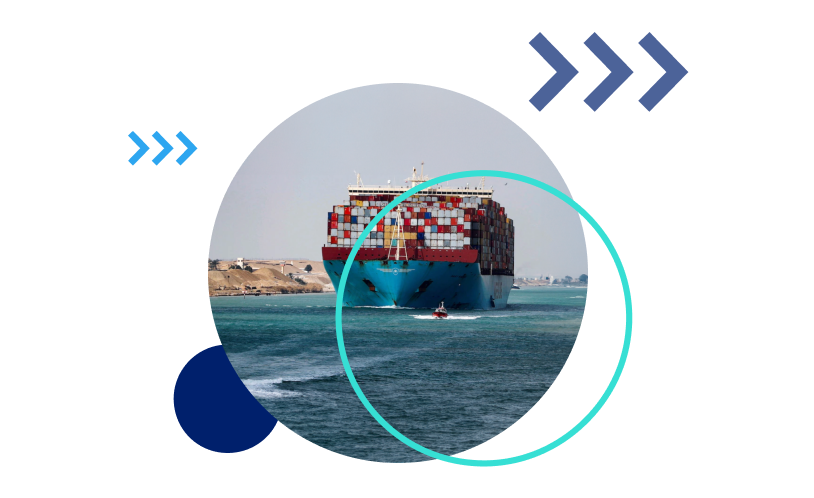If you’ve been shipping goods internationally during the pandemic, you already know that prices have gone a bit haywire.
Around 90% of goods sold globally are moved by ocean freight. But getting stuff from where it’s made to where it’s sold involves a surprising number of stakeholders, documents, forms, and abbreviations. This can be daunting on a good day.
Under pandemic conditions it’s become downright bizarre.
So today we’re going to try and explain what the deal is with volatile international shipping and offer actionable tips to help importers and exporters navigate the choppy waters and ensure successful supply chain shipping.
Need a freight quote?
The Container Crunch and Shipping During COVID-19
At the outset, it looked like COVID-19 would cause a massive economic downturn and that demand for freight would drop. Spooked by plunging revenue and sluggish recovery from the 2008 Financial Crisis, when the pandemic hit, carriers were quick to protect themselves from the fallout by limiting capacity and imposing rate increases to cover costs stemming from pandemic closures.
Plus, with many suppliers in China shut down, the flow of goods through ports slowed dramatically, causing ocean carriers to cancel sailings and abandon empty containers around the world.
But instead of leading to a downturn in freight, sheltering in place propelled a massive online shopping boom, with e-commerce sales skyrocketing and demand for shipping capacity from Asia to Europe and North America exploding.
As China emerged early from the first lockdowns, manufacturing resumed and businesses started trying to restock inventory. Except shipping capacity and containers weren’t available to accommodate it.
This gap between demand and supply caused prices to spike dramatically and this trend has continued pretty much uninterrupted since the summer of 2020, putting mounting pressure on all importers and exporters – but especially on SMBs.
Even Chinese New Year, a two week public holiday typically marked by factory closures and a dip in exports, didn’t happen this year. In an effort to catch up with demand, many manufacturers remained operational and goods kept moving.
But this was not enough to ease the crunch and bring prices back down.
Making matters worse, virus-related disruptions, long delays at ports, customs hold ups, and the slow pace of container manufacturing means that there just isn’t enough freight to go around. And competition is fierce, with importers and exporters paying premiums to secure space.
This translates to long (long) transit times and high costs that can really impact an SMB’s bottom line.
Import/Export Impact
High shipping costs affect all businesses, but e-commerce and SMBs are particularly vulnerable to fluctuations in the total landed cost of the goods they sell.
In a recent survey from Freightos.com, 94% of SMB importers and exporters using the platform reported that their business was impacted by the pandemic.
Over half struggled with long delays and significantly higher costs, especially newer businesses.
An additional survey focusing on how importers and exporters handled shipping volatility found that 77% of respondents experienced supply chain difficulties and 44% raised prices as a result.
So, if you’ve been having a hard time getting your goods moving and have been shocked by the price of shipping, know that you are not alone.
Freight container rates are up about 200% globally since this time last year and there are no signs that prices will come down any time soon.
International freight in a pandemic is expensive and volatile and complex — but in the chaos there is a lot of opportunity.
What Makes a Supply Chain Successful?
COVID-19 has wreaked havoc on pretty much everything. In some cases, it’s been a huge boon and the growth of e-commerce is one such case.
The sector has been accelerated by at least five years, with shuttered storefronts forcing retailers to pivot and pushing freight volumes up dramatically.
The pandemic is creating a huge opportunity for savvy importers and exporters, but getting your goods where they need to be can be easier said than done.
Here are a few tips to reduce freight friction and smooth your supply chain shipping:
1. Book early
Transit times are tricky. With many ports operating at limited capacity, import regulations on specific goods tying up shipments in customs, and other delays (ahem… Suez), it’s worth building a buffer into your shipping. Talk to your freight forwarder to stay updated about transit times.
2. Diversify modes and lanes
One way to hedge against delays is to ship with different modes and diversify shipping lanes. This is one of the ways that e-commerce sellers have handled this year’s volatility, with more than half of shippers on Freightos.com searching and booking freight on less congested routes.
3. Budget for “surprises”
The total landed cost of goods includes the price of goods, shipment costs, insurance fees, customs duties, and any other charges incurred along the way. When deciding whether to import a specific product, budget for additional costs to determine whether you’ll be profitable.
4. Keep inventory levels up
If you’re following the rising costs of freight, you might be tempted to hold off on ordering until prices plateau or even come down. Considering the current market, this isn’t happening any time soon so it’s worth keeping inventory levels stable even if you need to allocate some additional working capital.
5. Go digital
Get ahead and secure supply chain integrity by using a digital freight marketplace to compare, book, and track your shipping. The ability to compare carriers and rates, purchase additional services, and access ongoing support throughout the shipping process will free you up to seize opportunities and grow your business.
Learn more about Supply Chain Management In Shipping
Want to learn more? Watch our webinar with Payoneer to get more tips on combatting shipping volatility.



